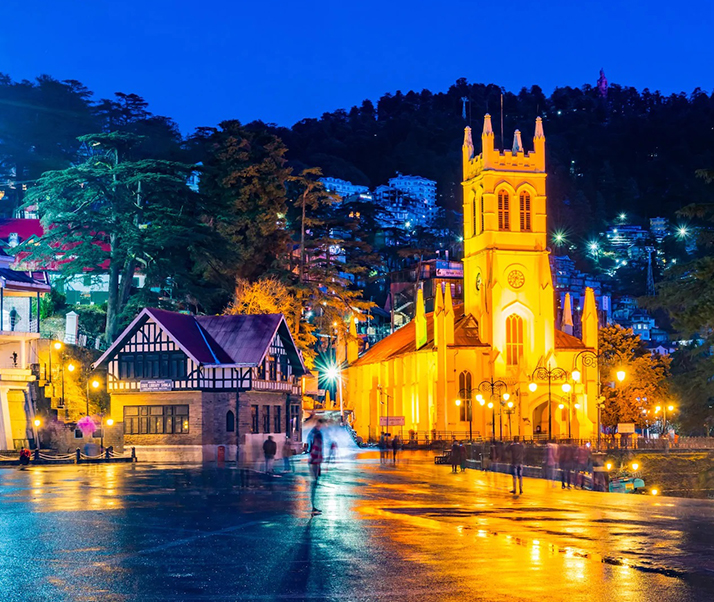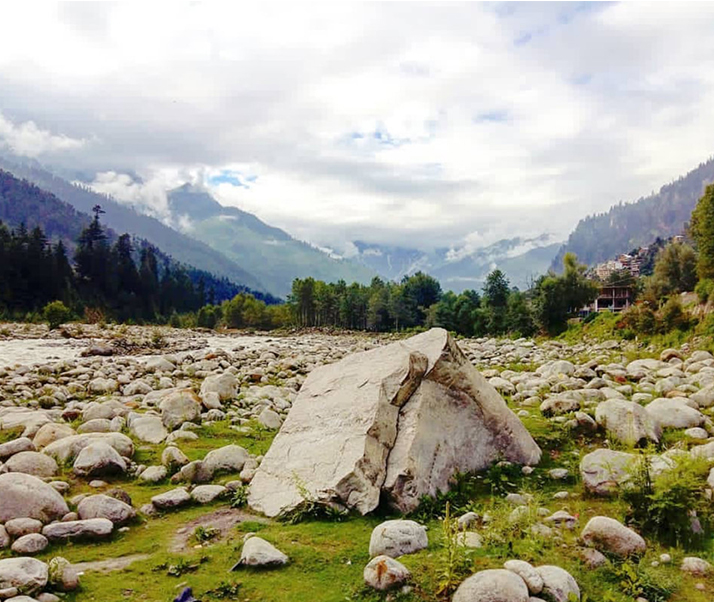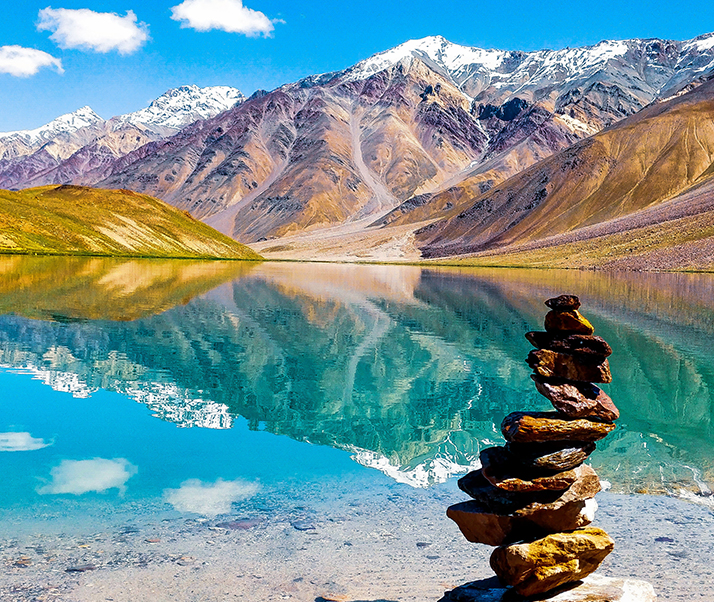+91 9884683139
talk to our Destination
specialist

Endowed with lofty Himalayan mountains, ancient religious sites and a cheerful culture, Himachal Pradesh is home to famous tourist destinations like Kullu, Manali, Chamba and Shimla.
Himachal Pradesh is also known for scenic landscapes, culture, adventure sports and a variety of fairs, festivals and celebrations throughout the year. McLeod Ganj, the abode of the 14th Dalai Lama is worth visiting. Himachal Pradesh also has plenty of forts, palaces, and monasteries that are of utmost cultural and historical importance. Himachal Pradesh is located in the north of India bordering Jammu & Kashmir, Uttarakhand, Uttaranchal and Punjab and a boundary with Tibet.
Even though Himachal Pradesh is great to visit anytime throughout the year, one can always pick a season to fulfil their vacation goals. While the monsoons are a backpacker’s delight, summers are the perfect escape from the heat in Himachal Pradesh. The winters in Himachal Pradesh are ideal to enjoy a romantic retreat in the snow-clad landscape with freezing temperatures.
Key Facts
Apr - Jun: Min: 22° C /Max: 37° C
Jul - Sep: Min: 14° C /Max: 21° C
Oct - Feb: Min: 3° C /Max: 15° C

The Hill Station with rich Colonial History!!
Situated at the height of 2200m, Shimla was the summer capital of British India. Shimla still retains its old-world charm with beautiful colonial architecture pedestrian-friendly Mall Road and the..
ridge lined up with multiple shops, cafes and restaurants. The weather is pleasant for most of the months with tourists flocking especially during the summer months. The winters are cold with some days of snow from mid-December till February end.
Shimla is well connected with many cities and is just 4 hours from the nearby city of Chandigarh. The city has an airport as well; however, there aren't many daily flights from here. The railway station connects Shimla with the plans and is famous for the Kalka-Shimla train route; a UNESCO listed World Heritage site.
Shimla is often covered with nearby towns of Kufri, a hill-station almost always covered by snow and Chail, famous for a huge palace and the highest cricket ground in the world. Tourists also visit the famous Jakhu Temple and engage in sightseeing at various viewpoints during their trip to Shimla.

Lover’s Paradise!!
Nestled in between the snow-capped slopes of the Pir Panjal and the Dhauladhar ranges, Manali is full of jaw-dropping views, lush green forests, sprawling meadows carpeted with flowers, gushing blue streams..
a perpetual fairy-tale like mist lingering in the air, and a persistent fragrance of pines. From museums to temples, from quaint little hippie villages to bustling upscale streets, river adventures to trekking trails, Manali has every reason to be the tourist magnet it is, all year round.
Swaying eucalyptus trees, endearing little eateries, small kitschy local market places, and cafes which serve delicious local food at unbelievable prices, Old Manali is a serene, tranquil place, whose lingering silence is broken only by the twittering of the birds and the sound of the roaring waters of the Kullu River.
Most important places to visit are Solang Valley - offer some breathtaking views of the surrounding landscape, Rohtang Pass – which connects the Lahaul and Kullu valleys, famous among nature lovers, photographers and adventure seekers alike, Naggar Castle - located among the breathtaking forests in Naggar town, the Naggar Castle is a stunning historical edifice. Once used as the residence of Raja Sidh Singh of Kullu, the castle is a fine blend of traditional Himalayan and European architecture.

Trekking Mecca and a virgin Paradise!!
Long winding roads and valleys that present unforgettable glimpses of cold desert and snow-crowned mountains welcome you when you set foot into Spiti Valley.
Bordered on all sides by the Himalayas, Spiti Valley, located in Himachal Pradesh, has an altitude of 12,500 feet above sea level, and gets just around 250 days of sunshine in the year, making it one of the coldest places in the country. With the thick Himalayan snow cutting Spiti off from the rest of the country for around 6 months a year, the summer months are the only time Spiti is directly accessible via motorway.
The term Spiti means 'The Middle Land', as Spiti Valley separates India from Tibet. Scantily populated, Spiti is an adventure lover’s paradise, with a number of trekking trails that tourists can choose from. All of these treks start from Kaza (Spiti’s capital from where you make your base camp) to various peaks from where you can get panoramic views of the Himalayan mountains. An easy 1.5-kilometre trek along the Spiti River from Dhankar Monastery to Dhankar Lake promises gorgeous views of the villages below. The Dhankar Lake itself is a place where you can sit back and relax amidst the cool mountain air.